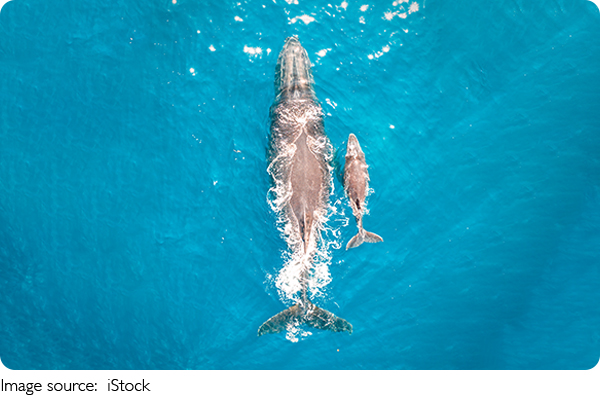From Wings to Fins

Have you ever wondered how animals have developed such diverse ways to move?
From soaring through the sky to gliding through the water or crawling on the land, each form of locomotion has evolved over millions of years to suit the animal's environment.
In this article, we're going to explore the fascinating journey of evolution that has allowed creatures to move in unique ways, from wings to fins and beyond.
The Birth of Flight: Wings in the Sky
When we think of flight, birds almost immediately come to mind. However, the evolution of flight wasn't just about developing wings. It was about overcoming the forces of gravity and air resistance, and each creature took a different path.
We often hear that birds evolved from dinosaurs, but did you know that flying insects also share similar roots? Insects were among the first creatures to conquer the skies, developing wings that allowed them to escape predators and find food in places unreachable by other animals.
These early insects' wings were different from those of birds, with a more rigid structure and no muscles to push them up and down—an entirely different design than that of modern flying animals.
Meanwhile, birds evolved their flight capabilities with bones that were lightweight yet strong, specialized muscles, and feathers that provided the necessary lift.
This helped birds move through the air with grace and agility, with some species like the albatross covering vast distances over the ocean without ever needing to flap their wings.
Swimming to Survival: Fins in the Water
Next, we dive into the world of aquatic animals. Fish, whales, and even some amphibians have developed fins and flippers as their primary means of locomotion.
Unlike wings, which allow for controlled flight through air, fins propel animals through water with a mix of propulsion and lift.
Fish were the pioneers in aquatic locomotion, and their fins have evolved in many ways depending on their environment. Fish with streamlined bodies use their tail fins to generate propulsion, allowing them to swim fast and efficiently.
Others, like the flat fish, have developed fins that help them glide over the ocean floor, while some have adapted their fins to help them jump out of the water to escape predators.
Mammals, like dolphins and whales, took a different approach. While whales evolved from land-dwelling creatures, they developed flippers for movement in water. Dolphins, similarly, rely on their tail flukes for propulsion, able to swim quickly to catch prey or evade danger.
Crawling on Land: Legs to Conquer Earth
On land, animals face the challenge of gravity in an entirely different way. The evolution of legs and limbs in land animals allowed them to conquer the earth, giving them the ability to walk, run, climb, and dig. But land-based locomotion came with its own unique set of challenges: balancing the body, finding traction, and moving effectively on different terrains.
We, as humans, evolved from ancient primates who used their hands and feet to grasp, climb, and walk. Over time, our ancestors transitioned to walking upright on two legs, which freed our hands for tool use and gave us better vision to spot predators and prey.
Other creatures, like reptiles and mammals, adapted their limbs to suit their needs. Some evolved to sprint, like cheetahs, whose long, slender legs help them achieve incredible speed. Others, like lizards, use their bodies to climb and cling to surfaces. The diversity of locomotion on land is a direct result of evolution fine-tuning these limbs for survival.
The Interconnected Web of Evolution
So, what do wings, fins, and legs have in common? It's clear that evolution has shaped each animal's mode of movement based on its environment and needs. Whether it's soaring through the sky or navigating the ocean depths, every adaptation tells a story of survival and mastery over nature.
What's fascinating is that each type of locomotion—be it flight, swimming, or crawling—has its own set of challenges. Birds must contend with air currents, fish need to manage water resistance, and land animals wrestle with gravity. Over millions of years, animals have fine-tuned their movements to make the best of these challenges.

Conclusion: A Journey of Adaptation
As we reflect on the incredible diversity of animal movement, it's important to realize how much these adaptations have contributed to survival. The evolution of wings, fins, and legs didn't just happen by chance. It was the result of countless generations of animals responding to their environments, changing and adapting in ways that we continue to study and admire today.
Just like animals, we too adapt to our surroundings—though our "locomotion" may not always be physical. Whether it's moving through challenges in life or adapting our strategies for success, evolution is a reminder of how far we can go with the right tools and mindset. So next time you see an animal glide across the sky or swim through the sea, remember: it's not just about how they move; it's about how they've evolved to move in the world.
-
 Morne National Park20% Of Mahé Island Is A Park?! You Won’t Believe What’s Inside
Morne National Park20% Of Mahé Island Is A Park?! You Won’t Believe What’s Inside -
 Sierra Leone's BeachesJourney To Where Forest Meets The Sea! Explore Sierra Leone’s Island Escapes, Sunset Beaches, And Historical Shores
Sierra Leone's BeachesJourney To Where Forest Meets The Sea! Explore Sierra Leone’s Island Escapes, Sunset Beaches, And Historical Shores -
 Gene-Tech Game ChangersCan DNA redesign fight climate change? Dive into 2025’s wildest synthetic biology trends—from healing to feeding the world.
Gene-Tech Game ChangersCan DNA redesign fight climate change? Dive into 2025’s wildest synthetic biology trends—from healing to feeding the world.